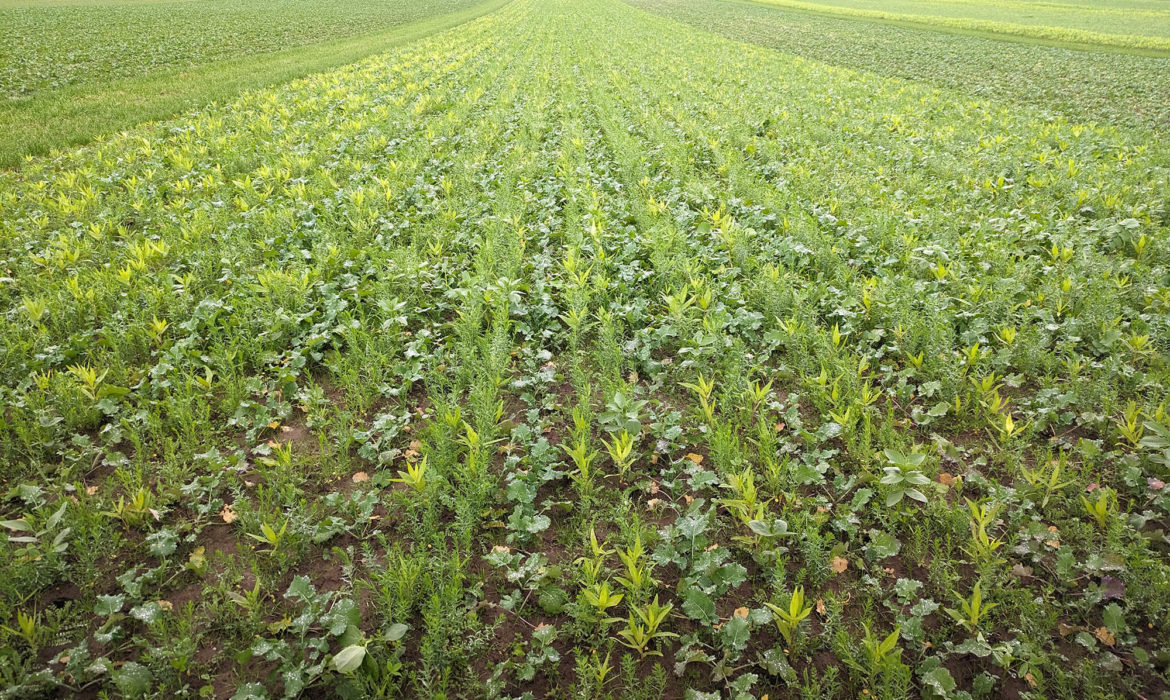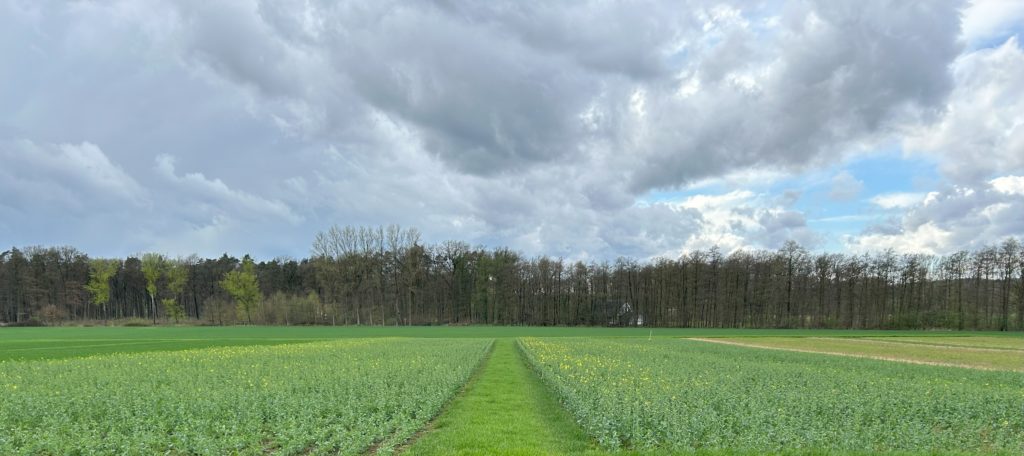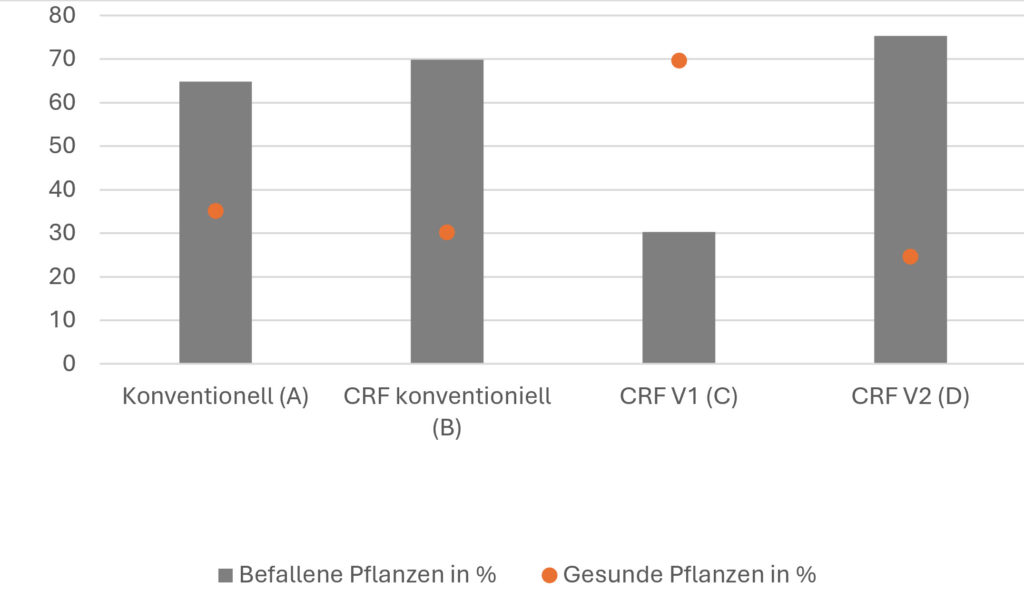Rape winter stem weevil – companion plants support rape

After the spring barley was harvested in August, the winter rape variety LG Auckland
was sown at the beginning of September in good soil conditions. A few days after sowing, a heavy rain event meant that crop emergence was not optimal and growth was inhibited in the autumn.

The following variants were selected this year:
- Conventional (A) with 12.5 cm row spacing and 45 seeds/m²
– with full-width spraying and without companion plants - Conventional (B) with 50 cm row spacing and 30 seeds/m²
– with full-width spraying and without companion plants - CRF V1 (C) with 50 cm row spacing and 30 seeds/m²
– grasses with full area coverage and with companion plants during sowing - CRF V2 (D) with 50 cm row spacing and 30 seeds/m²
– grasses with full area coverage, companion plants sown during the hoeing pass
The companion plants in Variant C consisted of the BRASSICAPRO mixture with serradella, linseed, field bean, Egyptian clover, Persian clover and ramtilla. The companion plants were sown with the rape. In variant D, serradella, buckwheat and ribwort plantain were sown during the hoeing pass in autumn. The parallel sowing of companion plants and rape proved to be beneficial last year, since the space between the rows was well covered and the weeds could therefore be suppressed to a large extent. Sowing with the hoeing machine did not have the desired weed suppression effect.

An insecticide measure was carried out on 13.10.2023 in response to an influx of oilseed rape pollen beetles and rape winter stem weevils, which were sampled with yellow trays. Although no other critical control limit was exceeded, a heavy infestation of the rape winter stem weevil was determined. The crop was evaluated for infestation, in order to be able to accurately assess the infestation. The plant population was extremely heterogeneous and the beginning of flowering was also staggered.

As can be seen in Figure 1, the infestation was very high in all variants. It is conspicuous that the infestation was up to 57% lower in Variant C with the BRASSICAPRO mixture than without a companion crop. This suggests that companion plants distract the rape winter stem weevil and therefore support the development of the rape.

A lower yield can be expected as a result of the heavy infestation, since the main stems are badly damaged. So-called broom growth is expected as the vegetation develops owing to the large number of side stems. This means that the crop will flower and ripen very unevenly.

